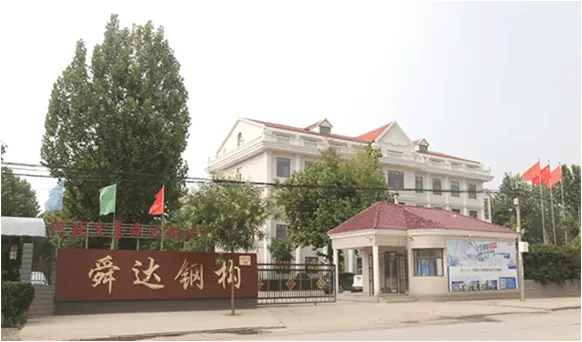- Afrikaans
- Albanian
- Amharic
- Arabic
- Armenian
- Azerbaijani
- Basque
- Belarusian
- Bengali
- Bosnian
- Bulgarian
- Catalan
- Cebuano
- Corsican
- Croatian
- Czech
- Danish
- Dutch
- English
- Esperanto
- Estonian
- Finnish
- French
- Frisian
- Galician
- Georgian
- German
- Greek
- Gujarati
- Haitian Creole
- hausa
- hawaiian
- Hebrew
- Hindi
- Miao
- Hungarian
- Icelandic
- igbo
- Indonesian
- irish
- Italian
- Japanese
- Javanese
- Kannada
- kazakh
- Khmer
- Rwandese
- Korean
- Kurdish
- Kyrgyz
- Lao
- Latin
- Latvian
- Lithuanian
- Luxembourgish
- Macedonian
- Malgashi
- Malay
- Malayalam
- Maltese
- Maori
- Marathi
- Mongolian
- Myanmar
- Nepali
- Norwegian
- Norwegian
- Occitan
- Pashto
- Persian
- Polish
- Portuguese
- Punjabi
- Romanian
- Russian
- Samoan
- Scottish Gaelic
- Serbian
- Sesotho
- Shona
- Sindhi
- Sinhala
- Slovak
- Slovenian
- Somali
- Spanish
- Sundanese
- Swahili
- Swedish
- Tagalog
- Tajik
- Tamil
- Tatar
- Telugu
- Thai
- Turkish
- Turkmen
- Ukrainian
- Urdu
- Uighur
- Uzbek
- Vietnamese
- Welsh
- Bantu
- Yiddish
- Yoruba
- Zulu
gru . 30, 2024 04:30 Back to list
Industrial Buildings The Backbone of Modern Economy
Industrial buildings have served as the backbone of our modern economy for centuries. They are specialized structures designed to facilitate manufacturing, assembly, warehousing, and distribution of goods. As the global economy continues to evolve, the significance of industrial buildings remains ever-present, adapting to new technologies, environmental standards, and economic demands.
Historically, industrial buildings emerged during the Industrial Revolution in the 18th and 19th centuries. Factories were established to mass-produce goods, and their design was heavily influenced by the need for efficient workflows and scalability. The iconic brick and steel structures are not just remnants of the past; they are a testament to human ingenuity and the capability to innovate. These buildings played a pivotal role in shaping urban landscapes, as they attracted workers and fostered communities around industrial hubs.
In today's context, the landscape of industrial buildings has changed remarkably. With the rapid advancement of technology, these structures have evolved to accommodate sophisticated machinery and automation processes. Modern industrial buildings are designed with flexibility in mind, allowing companies to adapt to shifting market demands. This versatility is crucial in an economy that thrives on change, where businesses must pivot quickly to stay competitive.
Sustainability is another significant trend influencing the design and construction of industrial buildings. As the world grapples with climate change, architects and builders are increasingly focused on creating structures that minimize environmental impact. This includes the use of green building materials, energy-efficient systems, and sustainable practices. For instance, many new constructions incorporate solar panels, rainwater harvesting systems, and energy-efficient HVAC systems, thereby reducing their carbon footprint. Additionally, adaptive reuse of older industrial buildings is gaining traction, where existing structures are renovated for new purposes, preserving their historical value while promoting sustainability.
industrial building

The rise of e-commerce has also dramatically altered the requirements for industrial buildings. Distribution centers, once focused solely on storage, are now designed as sophisticated logistics operations with advanced technology to handle high volumes of orders efficiently. The demand for last-mile delivery solutions has led to the establishment of smaller industrial spaces closer to urban areas, facilitating quicker and more efficient distribution networks. This trend has shifted not just the location of industrial buildings but also their design, focusing on accessibility and integration with transport systems.
Despite the many advancements, the core function of industrial buildings remains unchanged they are designed to enhance productivity and efficiency. The layout of these spaces is meticulously planned to optimize workflow, from raw material input to finished product output. Features such as high ceilings, large open spaces, and specialized areas for machinery and logistics are crucial for maximizing efficiency. The design also pays attention to safety and comfort, providing adequate ventilation, lighting, and safety measures for workers.
Moreover, the future of industrial buildings promises even more innovative transformations. The integration of smart technology is beginning to play a significant role. Internet of Things (IoT) devices can monitor machinery performance and environmental conditions, allowing businesses to make data-driven decisions that enhance efficiency. Such technology not only streamlines operations but also has the potential to predict maintenance needs, reducing downtime and operational costs.
In conclusion, industrial buildings are integral to the global economy, evolving continuously to meet the demands of modern society. As we embrace sustainability, technological innovation, and new market dynamics, these structures will continue to adapt, ensuring that they remain relevant in a rapidly changing world. The industrial buildings of today are not merely facilities; they are dynamic environments that support the complexities of contemporary production and distribution systems, shaping the economy of the future.
-
Cold Formed Steel Residential Framing
NewsMay.21,2025
-
Innovative Steel Structure Building Solutions
NewsMay.19,2025
-
Innovative Prefab Metal Shed Solutions
NewsMay.19,2025
-
Durable Steel Horse Shelter Solutions
NewsMay.19,2025
-
Durable Metal Shed Solutions
NewsMay.19,2025
-
Durable Big Metal Shed Solutions
NewsMay.19,2025
Products categories
Our Latest News
We have a professional design team and an excellent production and construction team.












